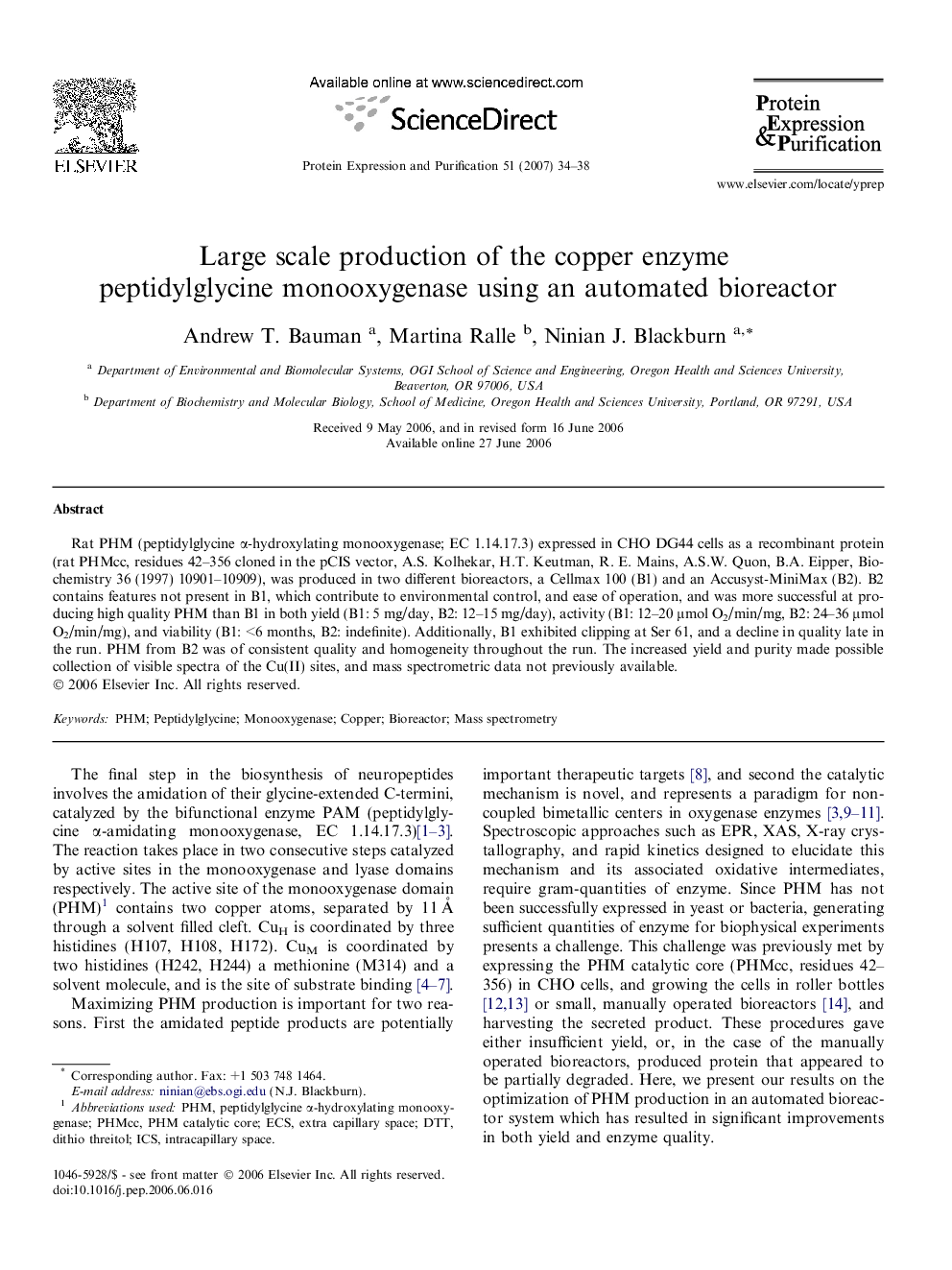| Article ID | Journal | Published Year | Pages | File Type |
|---|---|---|---|---|
| 2021920 | Protein Expression and Purification | 2007 | 5 Pages |
Rat PHM (peptidylglycine α-hydroxylating monooxygenase; EC 1.14.17.3) expressed in CHO DG44 cells as a recombinant protein (rat PHMcc, residues 42–356 cloned in the pCIS vector, A.S. Kolhekar, H.T. Keutman, R. E. Mains, A.S.W. Quon, B.A. Eipper, Biochemistry 36 (1997) 10901–10909), was produced in two different bioreactors, a Cellmax 100 (B1) and an Accusyst-MiniMax (B2). B2 contains features not present in B1, which contribute to environmental control, and ease of operation, and was more successful at producing high quality PHM than B1 in both yield (B1: 5 mg/day, B2: 12–15 mg/day), activity (B1: 12–20 μmol O2/min/mg, B2: 24–36 μmol O2/min/mg), and viability (B1: <6 months, B2: indefinite). Additionally, B1 exhibited clipping at Ser 61, and a decline in quality late in the run. PHM from B2 was of consistent quality and homogeneity throughout the run. The increased yield and purity made possible collection of visible spectra of the Cu(II) sites, and mass spectrometric data not previously available.
